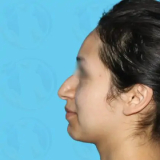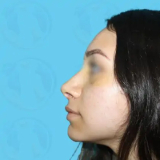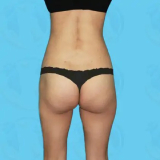Blepharoplasty
Conveniently located to serve the areas of Tijuana, Mexico

Eyes are one of the most distinctive of all facial features, and have unique and varying shapes, sizes, colors, and angulations. Eyes are also often the first facial feature to noticeably age. In our 20s and 30s, we begin to see crow’s feet (wrinkles around the outer aspect of the eyes), laugh lines, and forehead lines. Later, the skin thins, the forehead descends, and causes the eyebrows to droop. Then additional excess skin encroaches on the eyes, they can become puffy. All of this can result in a stern, angry, or tired appearance.
The upper eyelid blepharoplasty corrects excessive, overhanging skin to restore a more youthful shape to the eyes. It can take years off one’s appearance and has been shown to have very high patient satisfaction rates.
Contents
Ideal Candiddate
The ideal candidate for blepharoplasty is in general good health and has reasonable expectations for the procedure.
Risks
As with any surgery, a blepharoplasty carries the risk of complications even when the surgeon uses utmost care, judgment, and skill. You should expect soreness, bruising, and swelling at the sites. There is a low chance for skin irregularities, difficulty closing the eyes (that will resolve once swelling reduces), bleeding, inflammation, poor healing, adverse reaction to medicine, infection, and scarring.
Surgery Preparation
Be frank in discussing your expectations with your surgeon. He or she should be equally frank with you, describing the procedure in detail and explaining its risks and limitations. Your surgeon should also explain the anesthesia he or she will use the type of facility where the surgery will be performed, and the costs involved.
During this consultation, be sure to tell your surgeon about any large weight losses or gains you’ve had at any time. You should also inform your surgeon if you smoke, and if you’re taking any medications, vitamins, or other drugs.
Don’t hesitate to ask your doctor any questions you may have, especially those regarding your expectations and concerns about the results.
Preparing for your blepharoplasty
Your surgeon will give you specific instructions on how to prepare for surgery, including guidelines on eating and drinking, smoking, and taking or avoiding vitamins, iron tablets, and certain medications. If you develop a cold or an infection of any kind, especially a skin infection, your procedure will have to be postponed.
While you’re making preparations, be sure to arrange for someone to drive you home after your surgery and, if needed, to help you out for a day or two.
Where your blepharoplasty surgery will be performed
Your surgery may be performed in a surgeon’s office-based facility, an outpatient surgery center, or a hospital. It’s usually done on an outpatient basis, for cost containment and convenience. Extensive procedures may require a hospital stay of two or three days.
Types of anesthesia for blepharoplasty
blepharoplasty can be performed under local anesthesia, which numbs the area, combined with a sedative to make you drowsy. You’ll be awake but relaxed and will feel minimal discomfort.
After your surgery
Don’t expect to look or feel great right after surgery. You’ll feel swollen and bruised, and you may feel a burning sensation. The pain can be controlled with medications prescribed by your surgeon, though you may still feel stiff and sore for a few days. You may temporarily lose all feeling in the area; don’t worry — it will return.
It’s not unusual to feel depressed in the days or weeks following surgery. Try to keep in mind that this is normal and will subside as you begin to look and feel better.
Getting back to normal after blepharoplasty
Healing is a gradual process. Your surgeon will probably tell you to start walking around as soon as possible (to help prevent blood clots from forming in your legs) but to avoid more strenuous activity for two to four weeks. Any stitches will be removed in five to ten days or dissolve, and you should be back at work in 2 to 3 days, or as much as two weeks after your surgery. When you resume activity depends on the extent of your procedure, how you feel, and what your doctor recommends.
If you have any unusual symptoms between visits — for example, heavy bleeding or a sudden increase in pain — or any questions about what you can and can’t do, don’t hesitate to call your doctor.
Your new look after blepharoplasty
The upper eyelid blepharoplasty corrects excessive, overhanging skin to restore a more youthful shape to the eyes. It can take years off one’s appearance and has been shown to have very high patient satisfaction rates.







